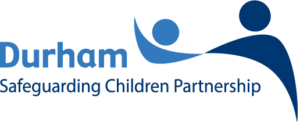Missing and exploitation (harm outside the home)
In Durham we are dedicated to reducing the risk of harm outside the home through understanding and disrupting opportunities of children and young people to go missing and/or be exploited. We understand that when young people reach adolescence, their world has grown significantly, through education, peer relationships in the community, the online world and so on. Therefore, young people are part of a much wider network of peers, neighbourhoods, and other influences. It is important that when we consider some of the issues affecting our children and young people that we understand these influences. We also need to consider not only the physical, real world, influences, but the wider groupings found within social media.
When supporting young people at risk of exploitation, it is important that young people’s support networks fully understand young peoples lived experiences/vulnerabilities outside the family home. It is important that those professionals working with children and young people have access to resources to support them to be able to identify, assess and intervene to reduce the risk of harm outside the home.
Harm outside the home information sources
- Barnardo’s: child sexual abuse and exploitation
- Barnardo’s: child trafficking
- Barnardo’s: What is child sexual abuse and exploitation? (video on YouTube)
- Barnardo’s on YouTube: child exploitation week
- Barnardo’s Real Love Rocks
- Contextual Safeguarding Research Programme
- Crimestoppers: child sexual exploitation
- Crimestoppers: county lines
- Crimestoppers: Fearless
- Mental health support for children, young people and families
- Gov.uk: children who run away or go missing from home or care
- Gov.uk: county lines programme overview
- Kooth
- Making Mental Health Everybody’s Business – A Practitioner’s Guide (PDF) [543KB]
- NSPCC: types of abuse (includes sexual and criminal exploitation)
- Stop and Prevent Adolescent Criminal Exploitation (SPACE)
- The Children’s Society: county lines and child criminal exploitation
